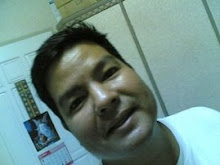Pond water quality is defined by what the water contains and in what amounts: dissolved oxygen, fish wastes and dead matter, as well as their associated byproducts (ammonia, nitrites, nitrates). Koi experts recommend the monitoring of the following water parameters once a week (or at the minimum, once a month): ammonia level, nitrite level, nitrate level, and pH. The monitoring should be more frequent if the pond is newly built, since the pond's water quality has not yet stabilized. Pond temperature must also be monitored regularly if temperature extremes are being experienced by an outside pond.
One rule that any novice koi hobbyist must know from the start is that water quality can never be judged by water clarity. Some ponds with crystal-clear water may be lethal to fish, since it was lethal enough to prevent algae from growing in it. On the other hand, green ponds where you never see the fish can be very healthy to its inhabitants, producing koi that are bigger and more colorful. Given this, the only way to assess water quality is to test it.
Pond water quality is tested using, well, water testing kits. Normally, every parameter requires its own kit, so the pond owner should be ready to buy 4-5 test kits to be able to test the basic parameters.
Pond water quality is tested using, well, water testing kits. Normally, every parameter requires its own kit, so the pond owner should be ready to buy 4-5 test kits to be able to test the basic parameters.
Excellent pond water quality is achieved through proper filtration of the pond water. Filtration is the process of removing waste products and other harmful compounds from the water. This can be done mechanically, biologically, or chemically (not recommended). Good filtration systems combine mechanical and biological filtration techniques to achieve its goal: clear and clean water. Water is usually drawn or impelled into the filter using an adequately-sized pump. The 'dirty' water undergoes 'cleaning' as it passes through the various stages of the filter, until it is returned to the pond in purer state.
Mechanical filtration consists of physically trapping the particulate wastes and debris in the water. Sand, beads, pads, and brushes are the commonly used materials for mechanical filtration. Passing the water through these materials traps whatever suspended materials are in the water, e.g., leaves, twigs, fish feces, etc. Mechanical filters become more effective if set up in two or more stages, with earlier stages designed to trap larger debris than later stages. Mechanical filters are often used as the first stage(s) of the filtration system since they prevent the 'larger' wastes from reaching the biological filters.
Mechanical filtration consists of physically trapping the particulate wastes and debris in the water. Sand, beads, pads, and brushes are the commonly used materials for mechanical filtration. Passing the water through these materials traps whatever suspended materials are in the water, e.g., leaves, twigs, fish feces, etc. Mechanical filters become more effective if set up in two or more stages, with earlier stages designed to trap larger debris than later stages. Mechanical filters are often used as the first stage(s) of the filtration system since they prevent the 'larger' wastes from reaching the biological filters.
Biological filtration, as the name implies, employs natural biological processes to convert harmful waste byproducts into less invasive compounds. Koi excrete ammonia, which is deadly to koi in large doses. Certain anaerobic (non-oxygen-breathing) bacteria convert ammonia into nitrites, which are, unfortunately, also poisonous to koi. The good thing is, there are 'good' aerobic (oxygen-breathing) bacteria that convert nitrites into nitrates, which are no longer deadly to koi. These 'good' bacteria are also known as nitrifying bacteria. Nitrifying bacteria occur freely in nature, and will populate your pond in time. Biological filtration therefore simply entails providing a good filtration medium (one with as large a surface area as possible) for these good bacteria to grow in.

Figure 1. Good filter systems are a
'must-have' in the koi hobby
Chemical filtration refers to the use of water clarifiers and algaecides to 'clean' the water. This may be used as a one-time fix or treatment of the pond only or as an integral part of the filtration system to maintain certain chemical properties of the pond water within specifications. Some koi experts believe that treating ponds with chemicals to clean it is not advisable. In fact, chemical filtration can be avoided altogether simply by setting up a good mechanical/biological filter system complemented by regular water changes.
.jpg)



























No comments:
Post a Comment